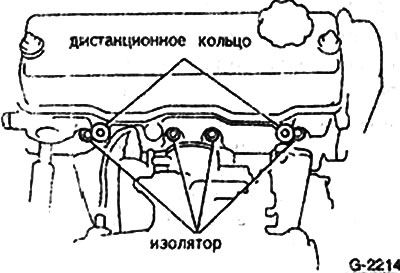Test conditions: The battery must be fully charged (12 V). The fuel filter must be clean.
Check fuses EFI 15A and IGN 7.5A. Replace blown fuses.
Switch off the ignition.
Disconnect the plug connection of the cold start valve.

Disconnect the fuel supply hose to the cold start valve.
Caution: This may cause fuel to leak out.
Connect a pressure gauge with a hose to the fuel line. TOYOTA specialist workshops use the special tool SST 09268-45012 for this purpose. Use new gaskets for this.

Connect terminals FP and +B with electrical wire.
Turn on the ignition. Do not start the engine.
Measure fuel pressure.
It should be 2.7-3.1 bar.
If the fuel pressure exceeds the specified value, the fuel pressure regulator must be replaced.
Remove the wire from the diagnostic plug.
Start the engine at idle.
Disconnect the vacuum hose from the pressure regulator and plug it with a clean screw.
Measure fuel pressure. It should be 2.7-3.1 bar.
Attach the vacuum hose to the pressure regulator.
Measure fuel pressure.
It should be 2.1-2.6 bar. If the measured pressure is not equal to the specified pressure, the vacuum hose and fuel pressure regulator must be checked.
If the fuel pressure in all three dimensions is not equal to the specified one, it is necessary to check the fuel hoses and connections for damage, plugs and tightness. If all this is in order, then the fuel pump needs to be replaced.
Stop engine.
Measure the fuel pressure after 5 minutes. It must be at least 1.5 bar.
If fuel pressure drops too quickly, check the fuel pump and fuel pressure regulator.
Remove the fuel pressure gauge. Put the fuel supply hose on the cold start valve with new gaskets and install the hollow screws. Tightening torques: engine displacement 1.3 l and 1.6 l (4A-EF) 10 Nm; engine displacement 1.6 l (4A-GE, 4A-GEL) - 15 Nm.
Connect the plug connection of the engine cold start valve.
Start the engine and check the fuel system for leaks.
